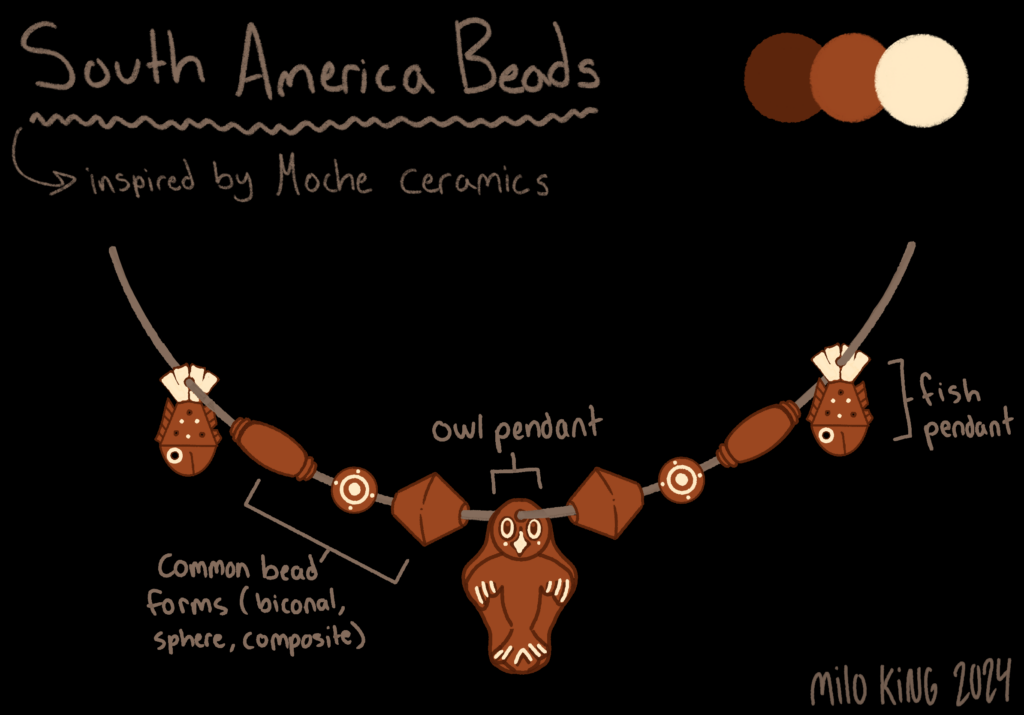Hello! It’s been a while!
While I was gone I embarked on a perilous mission to create homemade ceramics paint and constructed 9 whole red clay beads! Just in case you forgot, this month’s bead quest was inspired by ceramics from ancient Mexico. I took a leap of faith creating the slip paint for this project as well as making my very first pendants, and one of those was much messier than the other.



I cannot emphasize enough that my kitchen looked like it had been overrun by 7,000 muddy pigs. It was worth every second because I was ultimately successful but I would need a significant monetary incentive to try straining mud through a pasta colander again.
If you, dear reader, want to try making slip paint too, it’s actually incredibly easy! The method I used involved drying out a large helping of clay chunks of your desired color (the clay I used turns white when fired, but you can also add dyes if you need a different color). I then submerged the chunks in water and stopped pouring when the waterline was about an inch above the clay pile. After waiting for the water to start soaking into the clay, I started churning this stuff like butter. This part is by far the most taxing, and you will probably have to adjust how much water is in it a couple times while mixing to make sure the mud is actually liquid. Then, unfortunately, you have to pour the mixture through a strainer and into your desired container to make sure it’s smooth. This is not as physically draining as the mixing process, but I did feel despair surround my soul when I had to stick my entire hand into the goop.
After running the paint gauntlet, you can just use the mixture like any normal paint; just paint it onto your piece BEFORE bisque firing and send it in that kiln! Important to note that any streaks or lumps in the paint job won’t smooth out like glazes do when it’s fired, so paint carefully.

All in all I am absolutely thrilled with how these turned out, and I’m so pleased that my ridiculous plan to DIY slip paint actually worked! The white accents stand out exactly how I wanted.
See you soon for next month’s project!




